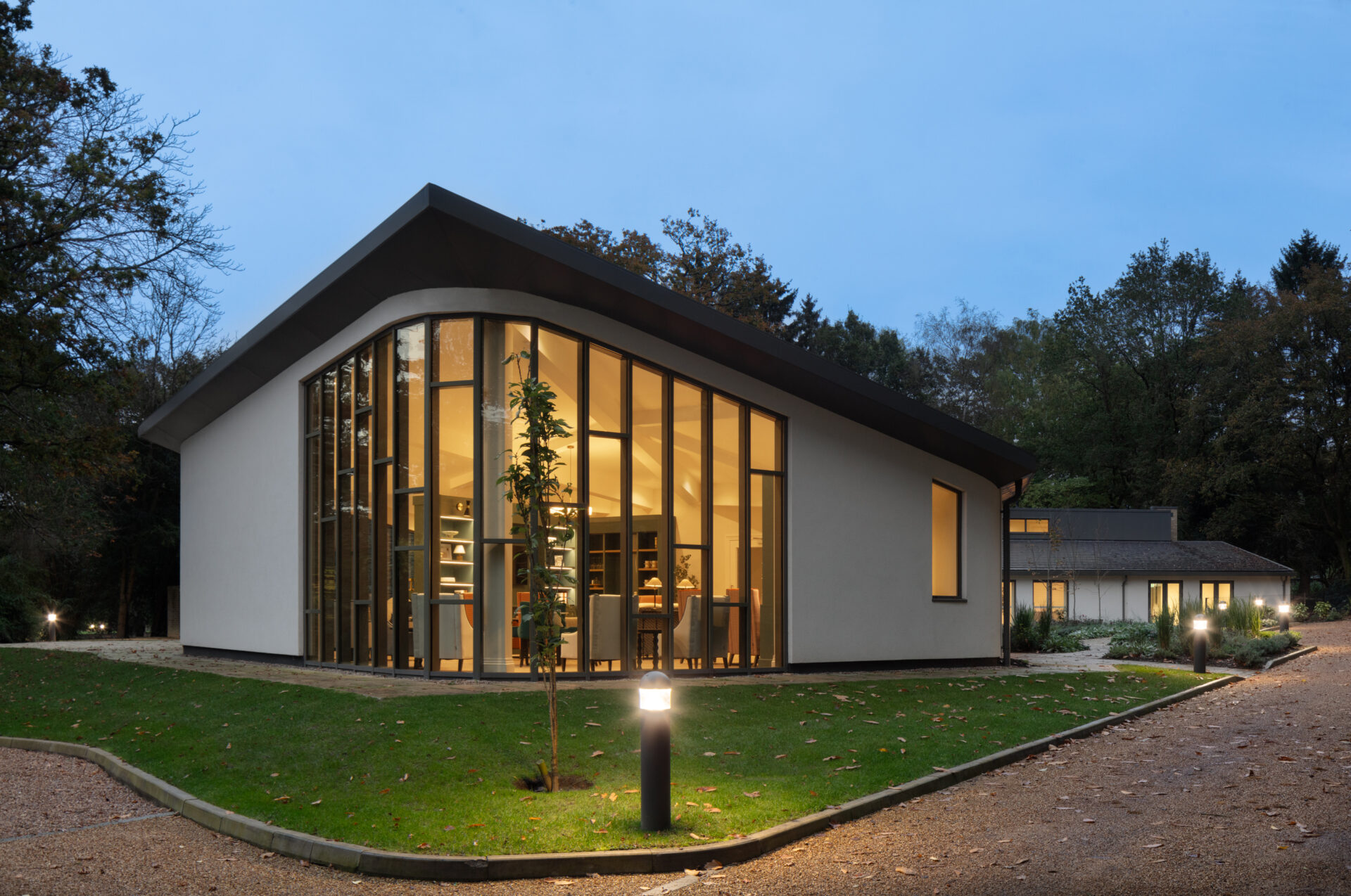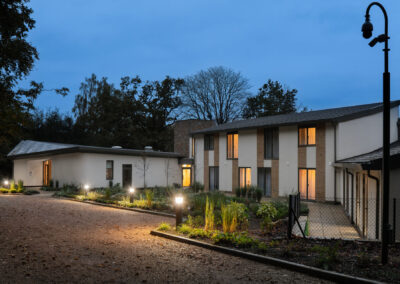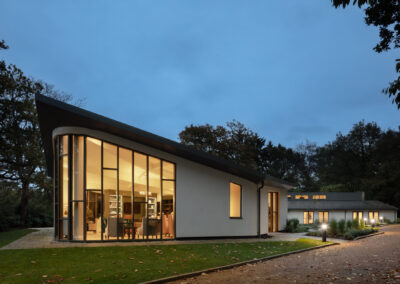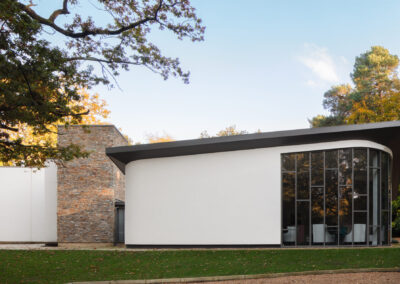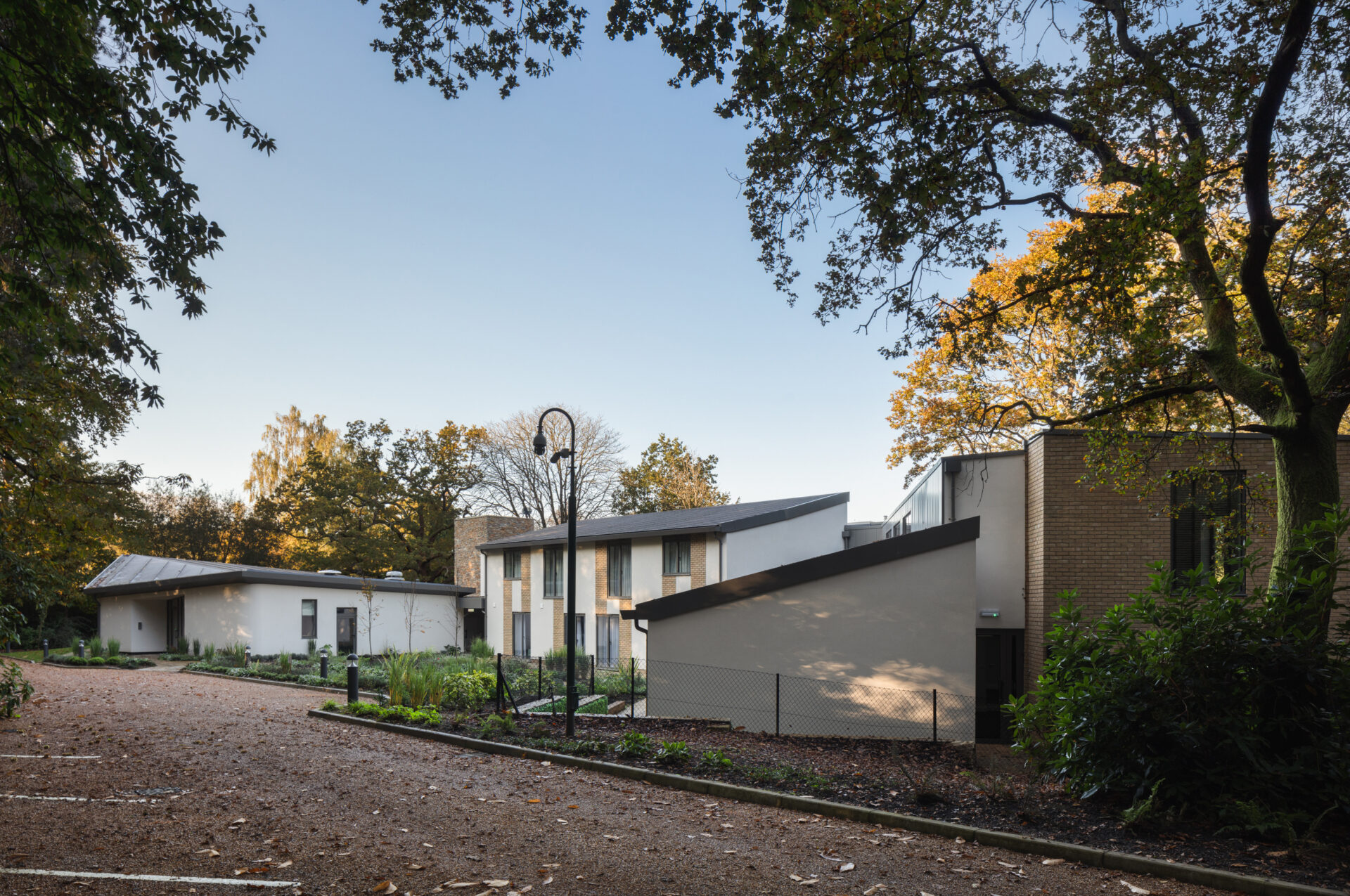INCA Case Study: Upper Court Luxury Care Facility, Surrey
Upper Court Luxury Care Facility, Surrey
Project Type: New Build
Building Type: Low Rise, Mixed Use
Architect: DIZ Architects
System Designer: Saint-Gobain Weber
Installer: Complete Rendering Systems (CRS)
System & Finish: webertherm XM Mineral Wool
U-Value Before: N/A
U-Value After: 0.14 W/m²K
CATERING FOR CURVED WALLS AND COMPLEX FAÇADES AT LUXURY CARE FACILITY
Nestled in the heart of Surrey, within 13 acres of land, is Upper Court – a Grade II-listed building once owned by former UK Prime Minister David Lloyd George. It has now been transformed from a grand home into a luxury 37-bed care residence.
Managed by Loveday & Co, London’s only senior living members’ club, it provides tailored nursing, rehabilitation and memory care for older people.
As part of the reimagining of the site, a new ancillary building was built within the grounds – created with therapy, wellness and rehabilitation in mind.
This was designed by DIZ Architects to be both highly functional and visually striking, but while its curved wall and butterfly roof design brought impact, it added complexity to determining a solution.
MULTIPLE SUBSTRATES, ONE CONSISTENT FINISH
To ensure a seamless finish across various substrates – including timber frame, cavity masonry, and single-skin blockwork – the project team needed a flexible, high-performance solution. It had to be capable of being adapted to unusual shapes without compromising on insulation performance, fire safety or architectural uniformity.
East Sussex-based Complete Rendering Systems (CRS) had been contracted to install the façade and worked closely with Saint-Gobain Weber to develop a suitable specification.
Together they selected webertherm XM – an external wall insulation (EWI) system – to improve the walls’ thermal performance and limit heat loss. This would improve the indoor comfort for residents, while reduce heating costs and cutting carbon emissions.
In addition to providing added warmth, EWI can also help to reduce noise pollution – a benefit which made it an ideal choice for this project.
The system was installed on timber frame areas using both 140mm and 160mm mineral fibre insulation boards mechanically fixed to 12mm exterior-grade plywood – a dual-density solution with Euroclass A1 fire classification.
A basecoat of weberend LAC rapid – an adhesive render coat – was applied in two passes with mesh reinforcement, followed by a webersil TF silicone topcoat in Winter White. This system offered high vapour permeability, excellent weather resistance, and a visually consistent finish across the development.
Elsewhere on the building, blockwork received a basecoat of weberend OCR render with the same silicone finish.
COLLABORATING TO OVERCOME ON-SITE CHALLENGES
The project evolved during the build, with an extension added after initial completion. Its curved façade posed a significant challenge due to the thickness of insulation required.
To maintain the architectural flow of the design, the project team worked together to find a solution. They decided to shape the wall with adhesive and apply lamella mineral fibre boards on curved areas.
This careful design choice was made because lamella boards are smaller and more flexible than standard full-size insulation boards, allowing them to bend around curved walls without cracking or splitting.
Bradley Halls from CRS Ltd said: “The lamella boards made a huge difference in getting a clean, smooth line on the curved walls. Without them, you’d struggle to keep the insulation tight to the wall without breakage.”
The use of weberend LAC rapid also provided benefits, allowing faster progress with fewer weather delays. All render was spray-applied for speed and consistency, which was especially important on the complex curves.
Steve Easey, specification manager at Weber, commented: “This was a technically interesting project because of the multiple wall types and curved surfaces. We were involved from the early stages to ensure the right system and insulation thicknesses were used for both compliance and durability.”
MEETING THE TECHNICAL DEMANDS
The project was required to meet a U-value of 0.14 W/m²K, which was achieved thanks to the thermal efficiency of the mineral fibre insulation.
Weber provided full U-value calculations, condensation risk assessments, and pull-out testing on the timber substrate. Average fixing resistance was recorded at 1.09 kN – well above the necessary threshold of between 0.7 and 0.8 kN.
Bradley added: “We’ve worked with Weber for many years, and they understand how we operate. The support throughout this job was excellent – from specification and samples to site visits and product supply. The finished building looks great and performs exactly as expected.”
The ancillary building at Upper Court was completed in spring 2024.
We’ve worked with Weber for many years, and they understand how we operate. The support throughout this job was excellent – from specification and samples to site visits and product supply. The finished building looks great and performs exactly as expected

